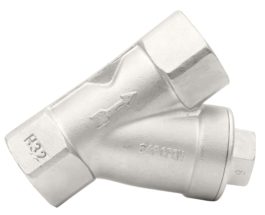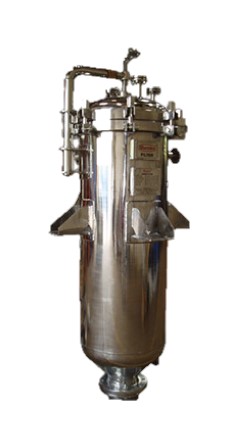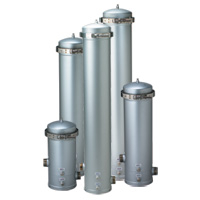Filtration
Filtration by SRS Direct
Filtration to filter various particles of size and weight. They are designed to en-train or filter away contaminants with these industrial Bag Filter Vessels. When unfiltered liquid enters the housing, solids are contained inside the basket for easy removal.
Choose from maximum working pressures of 100, 150, or 300 PSI with a -300°F maximum working temperature. These liquid filter bag housings and vessels are made of various materials. Mostly of aluminum, carbon steel, polypropylene (PP), stainless steel 304, or stainless steel 316.
Types of Filtration By SRS Direct
Y-Strainer
Y-strainers (Wye-strainers) are typically used in applications where the amount of solids to be removed is small. Frequent clean-out is not required. They are most often installed in gaseous services such as steam, air, nitrogen, natural gas, etc.
The compact, cylindrical shape of the Y-strainer is very strong and can readily accommodate the high pressures that are common in this type of service. Unlike basket strainers, y-type typically come in NPT, flanged, and even sanitary connections
An SRS Y-strainer has the advantage of being able to be installed in either a horizontal or vertical position. However, in both cases, the screening element or “leg” must be on the “downside” of the strainer body. This is so the entrapped solids can be properly collected and held for disposal.
Heavy-duty Strainers are furnished with high-quality stainless steel screens that are carefully fabricated to fit the strainer body perfectly. This, coupled with the precision machined screen seat on the body of the strainer, protects against any bypass.
Bag or Cartridge Type Filters
Bag filters tend to have the lowest equipment investment costs, and are generally tolerant of a wide range of process conditions. This makes them a good choice for a wide range of applications.
Also, the Bag Filters are a great choice for a liquid filtration system and will offer numerous potential benefits. A wise filter selection can minimize process downtime, and reduce or eliminate waste disposal costs.
It also limits worker exposure to the process liquid, reduces maintenance time and expense, and improves product quality.
Candle Type Filtration
The name candle filtration comes from the shape of the filter element, which is a long, this is not a cartridge filter, thin cylinder that resembles a candle. The earliest type of candle filter was developed by Wilhelm Berkefeld of Germany in the 1890s for water purification.
In addition, for the brewing industry, candle filters, Similar to pall filters, were developed for beer filtration in the 1950s and 1960s. They remain popular today. The candles are mounted inside a cylindrical pressure vessel that receives unfiltered beer.
Also, the candle itself is the septum that holds the filter aid, which could be diatomaceous earth, perlite, cellulose, or other materials, during the solid–liquid separation. The candles themselves do not perform any filtration.
It is the filter aid that coats the candle that does the actual filtration. Most commonly, candles are fabricated from metal, almost exclusively stainless steel. Other types we offer are ceramic, although other materials are possible.
Moreover, early candles were composed of stacked washers with small dimples to create a gap between them. This allows liquid but not filter aid to pass through. Today, candles are made from wedge or v-wire and have much greater precision than older types.
Unfiltered beer passes from the outside of the candle, through the filter cake, and into the center of the candle.
This now-filtered beer passes up through a mounting plate or manifold holding the candles and out of the filter housing. Most candles are mounted to the top of the filter housing. Other models have a bottom-mounted candle.
For beer filtration, there is no difference in the mounting position.
Showing all 3 results



